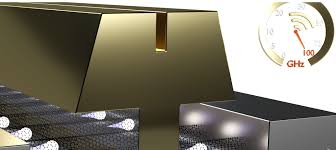
Breaking News
 Canada's MAID CULTURE OF DEATH Just Hit Rock Bottom: KILLING PRISONERS NOW!!!
Canada's MAID CULTURE OF DEATH Just Hit Rock Bottom: KILLING PRISONERS NOW!!!
 Weight gain single-handedly prevented by a gut microbe
Weight gain single-handedly prevented by a gut microbe
 Doug Casey on 2025's Defining Events and What Comes Next
Doug Casey on 2025's Defining Events and What Comes Next
 BREAKING: Officer Tatum & Other Investigators Believe A Potential Suspect In The Brown...
BREAKING: Officer Tatum & Other Investigators Believe A Potential Suspect In The Brown...
Top Tech News
 This tiny dev board is packed with features for ambitious makers
This tiny dev board is packed with features for ambitious makers
 Scientists Discover Gel to Regrow Tooth Enamel
Scientists Discover Gel to Regrow Tooth Enamel
 Vitamin C and Dandelion Root Killing Cancer Cells -- as Former CDC Director Calls for COVID-19...
Vitamin C and Dandelion Root Killing Cancer Cells -- as Former CDC Director Calls for COVID-19...
 Galactic Brain: US firm plans space-based data centers, power grid to challenge China
Galactic Brain: US firm plans space-based data centers, power grid to challenge China
 A microbial cleanup for glyphosate just earned a patent. Here's why that matters
A microbial cleanup for glyphosate just earned a patent. Here's why that matters
 Japan Breaks Internet Speed Record with 5 Million Times Faster Data Transfer
Japan Breaks Internet Speed Record with 5 Million Times Faster Data Transfer
 Advanced Propulsion Resources Part 1 of 2
Advanced Propulsion Resources Part 1 of 2
 PulsarFusion a forward-thinking UK aerospace company, is pushing the boundaries of space travel...
PulsarFusion a forward-thinking UK aerospace company, is pushing the boundaries of space travel...
 Dinky little laser box throws big-screen entertainment from inches away
Dinky little laser box throws big-screen entertainment from inches away
 'World's first' sodium-ion flashlight shines bright even at -40 ºF
'World's first' sodium-ion flashlight shines bright even at -40 ºF
Carbonics 100 GHz Wafer Scale Nanotube Technology Shows Nanotubes Can Finally Compete With Silicon

This indicates we could finally be close to a tipping point where nanotubes become a serious competitor to silicon in almost all areas of microelectronics.
Wireless device technology operating in the millimeter-wave regime (30 to 300 GHz) increasingly needs to offer both high performance and a high level of integration with complementary metal–oxide–semiconductor (CMOS) technology. Aligned carbon nanotubes are proposed as an alternative to III–V technologies in such applications because of their highly linear signal amplification and compatibility with CMOS. Carbonics report the wafer-scalable fabrication of aligned carbon nanotube field-effect transistors operating at gigahertz frequencies. The devices have gate lengths of 110 nm and are capable, in distinct devices, of an extrinsic cutoff frequency and maximum frequency of oscillation of over 100 GHz, which surpasses the 90 GHz cutoff frequency of radio-frequency CMOS devices with gate lengths of 100 nm and is close to the performance of GaAs technology. Carbonic devices offer good linearity, with distinct devices capable of a peak output third-order intercept point of 26.5 dB when normalized to the 1 dB compression power, and 10.4 dB when normalized to d.c. power.



